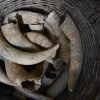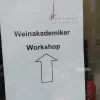2014 was a challenging year in terms of harvest in Hungary, it was also the year when the first Sparkling wine and Tokaji Aszú publication was launched by the Ministry of Agriculture with the guidance of the National Wine Expert Commission (OBB in Hungarian). It was the same year when the Kreinbacher Estate have released their first sparkling wine line-up, shaking the domestic -and later the international- sparkling wine industry from the core. I like to think that, the OBB were the first who discovered the real quality and potential in their sparkling wines. Looking back at the tasting notes from September 2014 of the Brut Classic, Brut Nature and Prestige Brut all three shared an overt autolytic note –especially the last- which was mostly unknown for Hungarian sparkling wines at the time. They had something which was unseen, unheard and kind of unknown for Hungarian sparkling wines. The mentioned aroma profile more than evident with perfect balance of freshness, notes of spice, minerality and intensity on fruit, precise yet being graceful with personality. Arguably notes which champagne´s represented to some tasters.
Mount Somló and beyond…
The line-up has increased in the mean time adding a rosé and extra dry category to the portfolio with several magnums as well, some of them with vintage declaration. Their success is without question, as several international awards confirm the track record and outstandingness of their sparkling wines. Kreinbacher Sparkling Wines have also been trailblazers in their own terms, since they did spark a small revolution in Hungary, whereby several producers started to use Furmint as a variety for their fizz, especially in Tokaj. Based on its neutral character, high acidity and durability it can work as base wine quite well. Regarding Somló one may ask if the variety Juhfark with even higher acidity and more neutrality in character be a suitable grape for sparkling wine. Time will tell…
Chardonnay has been proven to be a great variety when it comes to traditional sparkling wines, no question. Furmint has a strong Hungarian identity; it goes without saying if you want to display regional typicity one might want to use the variety to its advantage. In the case of Kreinbacher some varieties may be sourced outside of the Great Somló (Nagy-Somló) as the back label will indicate the geographic indication.
It’s all about precision…or is it?
There are no secrets at the Kreinbacher Estate, perhaps only one; the actual number of stock and bottles released. When the grapes are picked the potential alcohol should be around 10,3-10,7%, while acidity may have a wider tolerance but the optimal –depending on variety- should be around 10,5 g/l. Numbers give you consistency and the Kreinbacher sparkling wines do show consistency in larger numbers, since they deliver quality as well as quantity and currently no sign of sacrifice on any side. The earlier mentioned autolysis, lees note is something which stands out at the estate. With 18 months minimum for their basic „classic” line and at least 24 months for their „prestige” series on the lees in their 12° C cellar, it does show in the sensory assessment, toast, brioche and co. are not just made up notes, “time” after all does matter.
There is no doubt the Estate takes great pride in finding the best practices which suits their need and along the way adapting it to their final product. This means in practice not only getting consultant expertise from Champagne but equipment and as well as common additives such as yeast, sulphuric acid, bacterium for malolactic conversion. It makes easier the calculations on the numeric scale.
One may ask the question how much Somló terroir is still in their sparkling wines? The majority of the grapes are still from Somló, the place and the people who are making it are from the area of Somló; and while being a trailblazer in their own right they did learn new skills from outside and adapt to the circumstances. The “spirit of the place” and of the people are very much linked to the actual product, regardless of the equipment or material used (e.g. horizontal Coquard press, H₂SO₄). Can “somewhereness” displayed as a percentage?
Origin, production, typicity…does it matter?
Somló does have a track record in sparking wine production in the past, however only supplying raw materials in the 80’s to make bottle fermented fizz in Budafok by the Hungarovin company. With Hungarian fizz it´s still to this day quite often the case that it was sourced from one or several districts and may be processed in a completely different one. How much typicity have the majority of the Hungarian sparkling wines? It´s certainly not as straight forward as in some other regions of especially Western Europe, it´s emerging but with more producers doing their own work, from grapes to final release. Regardless of the steps in the middle and between, quality should play the first role and then comes provenance, typicity and the rest.







